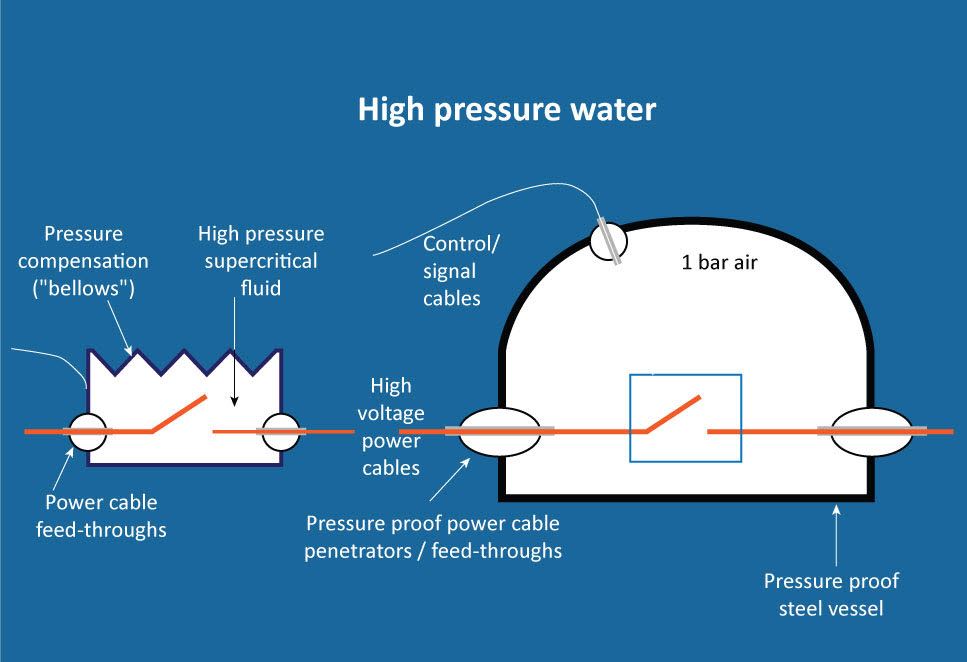To avoid the large costs of platforms or floaters, power switching equipment and other components will be placed on the seabed and be remotely controlled. The conventional solution is to use thick-walled pressure proof steel vessels to provide an environment for the power components similar to that of on-shore installations (air at atmospheric pressure). Power cable feed-throughs or penetrators from the high-pressure water environment and into the more "normal" ambient inside are also required. These features add substantial technical complexity and cost, in particular at large sea depths.
The current project aims at developing a novel subsea circuit breaker concept where the interrupting chamber contains nitrogen or hydrogen in its supercritical state at the same (high) pressure as the surrounding water. This has the potential of huge cost savings as no pressure-safe enclosure is required and power cable feed-throughs become simpler.
Supercritical fluids have certain physical properties similar to those of liquids and others similar to what is seen in gases. For arc extinction purposes - which is what current interruption in switchgear is about - the properties may be advantageous. The concept of using supercritical fluids for current interruption purposes is explored, partly experimentally and partly through numerical modelling of the arc behaviour and properties under various conditions.
The project is financed by The Research Council of Norway "New Concepts"

